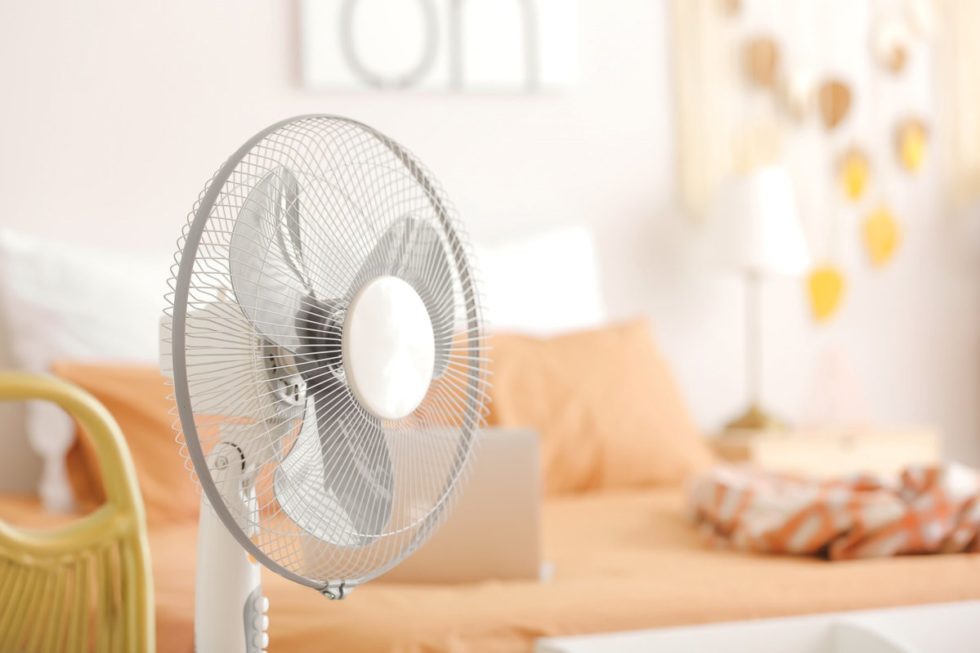Understanding Heat Sources: How To Cool Down Your Bedroom At Night

Before you can effectively cool down your bedroom, it’s crucial to identify the primary sources of heat. Understanding where the heat is coming from will help you develop targeted strategies to combat it.
Windows
Windows are often a significant source of heat gain, especially during the day. The amount of heat absorbed through windows depends on several factors, including the type of glass, the direction the window faces, and the amount of direct sunlight it receives.
- Single-pane windows are less efficient at insulating against heat than double- or triple-pane windows. Single-pane windows allow more heat to transfer through them, increasing the temperature inside your bedroom.
- Double-pane windows have two panes of glass with an air gap between them. This air gap acts as an insulator, reducing heat transfer compared to single-pane windows.
- Triple-pane windows provide even greater insulation by adding a third pane of glass and an additional air gap. These windows are highly effective at blocking heat transfer, but they can be more expensive.
- Window direction also plays a role. Windows facing south or west receive more direct sunlight, leading to greater heat gain. East-facing windows receive less direct sunlight and therefore contribute less to heat gain.
Walls
The materials used to construct your bedroom walls can significantly influence how much heat is absorbed and retained.
- Dark-colored walls absorb more heat than light-colored walls. This is because dark colors absorb more sunlight and convert it into heat.
- Materials with high thermal conductivity, such as concrete and brick, readily transfer heat. This means they can quickly absorb heat from the outside environment and transfer it inside your bedroom.
- Materials with low thermal conductivity, such as wood and insulation, are better at resisting heat transfer. These materials help keep your bedroom cooler by slowing down the rate at which heat is transferred from the outside environment to the inside.
Roof
The roof of your home plays a crucial role in regulating the temperature inside your bedroom. Similar to walls, the materials used for your roof can significantly impact heat gain.
- Dark-colored roofs absorb more heat than light-colored roofs. This can lead to a hotter attic, which can then transfer heat into your bedroom.
- Materials with high thermal conductivity, such as metal roofs, can quickly absorb heat from the sun and transfer it into your bedroom.
- Materials with low thermal conductivity, such as asphalt shingles or tile roofs, are better at resisting heat transfer. These materials help keep your attic cooler, which can help keep your bedroom cooler as well.
Appliances and Electronics
Appliances and electronics generate heat as they operate.
- Televisions, especially older models, can produce a significant amount of heat.
- Computers and other electronic devices also generate heat, especially if they are not properly ventilated.
- Lamps, especially incandescent bulbs, generate heat.
- Refrigerators and other appliances, even when not in use, can contribute to heat gain in your bedroom.
Cooling Strategies

Keeping your bedroom cool at night starts with preventing heat from entering in the first place. Once you’ve minimized heat gain, you can explore various cooling methods to make your bedroom comfortable.
Blocking Sunlight and Reducing Heat Gain
Sunlight is a major contributor to heat gain in bedrooms. Blocking sunlight during the day is essential to keep your room cool.
- Close Curtains or Blinds: Thick curtains or blackout blinds can significantly reduce the amount of sunlight entering your room. Light-colored curtains reflect more heat than dark ones.
- Plant Trees or Vines: Strategically placed trees or vines can provide shade and reduce heat gain. This natural approach also enhances the aesthetics of your home.
- Use Reflective Materials: Reflective materials like aluminum foil or white paint can be applied to the roof or walls to reflect sunlight and reduce heat absorption.
Cooling Methods, How to cool down your bedroom at night
Once you’ve minimized heat gain, you can explore various cooling methods to make your bedroom comfortable.
- Fans: Fans are a simple and energy-efficient way to cool down a room. They circulate air, creating a cooling breeze and making you feel more comfortable. Ceiling fans are especially effective as they circulate air throughout the entire room.
- Air Conditioners: Air conditioners are the most effective way to cool down a room, but they are also the most energy-intensive. Consider energy-efficient models and use them sparingly to minimize energy consumption.
- Evaporative Coolers: Evaporative coolers, also known as swamp coolers, work by evaporating water, which cools the air. They are more energy-efficient than air conditioners but less effective in humid climates.
Comparing Cooling Options
| Cooling Method | Energy Efficiency | Cost | Effectiveness |
|---|---|---|---|
| Fans | High | Low | Moderate |
| Air Conditioners | Low | High | High |
| Evaporative Coolers | Moderate | Moderate | Moderate |
Natural Cooling Techniques
Beyond technological solutions, several natural cooling techniques can help you beat the heat.
- Open Windows at Night: When temperatures drop at night, open windows to allow cool air to circulate. Close them before sunrise to prevent heat from entering.
- Use Ice Packs: Place ice packs or cold water bottles in front of a fan to create a cool breeze. This technique can help lower the temperature in a small space.
- Take Cool Showers: A cool shower can help you cool down quickly and feel more comfortable.
Creating a Cool Sleep Environment

After addressing the heat sources and cooling strategies, let’s move on to creating a comfortable sleep environment. The goal is to create a space that promotes restful sleep, especially during hot nights.
Optimizing Bedding and Sleepwear
The materials of your bedding and sleepwear can significantly impact your sleep comfort. Breathable fabrics allow air to circulate, preventing heat buildup and keeping you cool.
- Cotton: A natural and breathable fiber that absorbs moisture, making it a good choice for hot sleepers.
- Linen: Another natural fiber that is highly breathable and absorbs moisture, making it ideal for warm weather.
- Bamboo: A sustainable and soft fabric that is naturally breathable and moisture-wicking, offering a cool and comfortable sleep experience.
Similarly, loose-fitting pajamas made of breathable materials allow for better airflow, preventing overheating. Avoid tight-fitting clothing that traps heat and hinders air circulation.
Optimizing Bedroom Ventilation
Proper ventilation is crucial for creating a cool sleep environment. This involves maximizing airflow and removing hot air from the room.
- Open windows at night: If the outside air is cooler than the inside, opening windows can create a natural breeze, helping to cool down the room.
- Use fans: Ceiling fans or portable fans can circulate air and create a cooling effect. Place fans strategically to maximize airflow and direct cool air towards your bed.
- Consider cross-ventilation: Opening windows on opposite sides of the room allows for a through-breeze, effectively removing hot air and bringing in cooler air.
Creating a Calming Sleep Environment
Minimizing light and noise can promote relaxation and sleep quality. A calm and tranquil environment helps your body prepare for sleep, making it easier to fall asleep and stay asleep.
- Minimize light: Use blackout curtains or blinds to block out any light coming from outside. Avoid using electronic devices with bright screens before bed, as the blue light emitted can interfere with melatonin production, the hormone that regulates sleep.
- Reduce noise: Use earplugs or a white noise machine to block out distracting noises from outside or within the house. If possible, choose a quiet location for your bedroom, away from busy streets or noisy appliances.
How to cool down your bedroom at night – Keeping your bedroom cool at night can be a challenge, especially if you live in a hot climate. One way to combat the heat is to invest in a spacious home with ample ventilation, like a colorado springs 4 bedroom house.
These homes often feature large windows and open floor plans, allowing for natural air circulation and a more comfortable sleeping environment. Of course, you can also use other strategies like blackout curtains, fans, and even a strategically placed ice pack to help cool your bedroom down.
Keeping your bedroom cool at night can be a challenge, especially in warmer climates. One way to beat the heat is to choose a bedroom with a north-facing window, which receives less direct sunlight. If you’re looking for a coastal oasis with a cool and comfortable bedroom, consider checking out one bedroom apartments myrtle beach sc.
You can also invest in blackout curtains to block out the sun’s heat and keep your room cooler throughout the day.